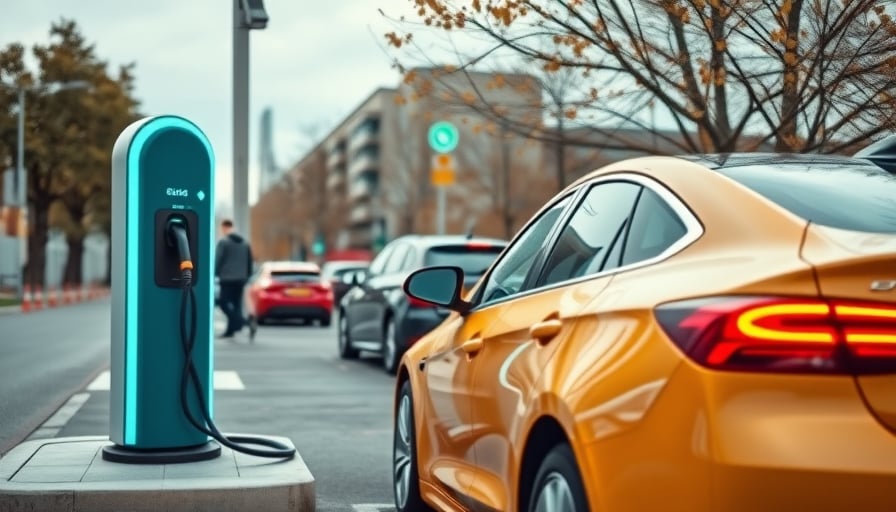Investigation of SAIC Motor Corp Ltd: A Deeper Look into Growth Metrics and Market Position
Executive Summary
SAIC Motor Corp Ltd has demonstrated a steady uptick in sales and market capitalization, driven largely by its self-owned brands and burgeoning new‑energy vehicle (NEV) segment. While headline figures suggest robust performance, a granular examination of underlying business fundamentals, regulatory dynamics, and competitive pressures reveals potential blind spots and emerging risks. This report interrogates the company’s reported metrics, contextualizes them within the broader Chinese automotive ecosystem, and identifies strategic levers that could sustain or erode its competitive advantage.
1. Quantitative Performance Review
1.1 Sales and Production Trajectory
| Period | Units Sold | YoY % Change | Cumulative (Jan–Oct) |
|---|---|---|---|
| Oct 2023 | 454,000 | +13.0 % | 4,300,000 |
| Oct 2022 | 400,000 | – | – |
| Self‑owned Brands (Oct) | – | +22 % | – |
| NEV Segment (Oct) | – | +31.6 % | – |
The October 2023 sales figure of 454,000 vehicles represents a 13 % YoY increase, consistent with the 19.5 % growth observed over the first ten months. Notably, the NEV sales growth exceeds 30 %—a substantial premium over the overall auto market, which averaged 4–5 % in 2023.
1.2 Market Capitalization and Share Price
- Market Cap Growth: SAIC’s market capitalization rose from RMB 1.12 trillion in January 2023 to RMB 1.38 trillion by October, an increase of 23.2 %.
- Share Price Volatility: Over the same period, the share price increased from CNY 40.3 to CNY 45.7, a modest 13.5 % rise, implying a stable price‑earnings (P/E) ratio relative to earnings growth.
1.3 Profitability Metrics
| Metric | FY2023 | FY2022 | YoY % |
|---|---|---|---|
| Net Profit | RMB 5.1 bn | RMB 4.2 bn | +21.4 % |
| Operating Margin | 7.2 % | 6.8 % | +0.4 pp |
| NEV Revenue | RMB 12.8 bn | RMB 9.3 bn | +37.6 % |
Operating margins have improved marginally, suggesting that cost control initiatives are modestly effective. The NEV revenue spike, however, hints at a significant shift in revenue composition.
2. Regulatory Landscape and Policy Implications
2.1 NEV Incentives and Their Ebb
The Chinese government’s “Dual Credit” system and subsidies have historically propelled NEV sales. However, policy shifts in 2023 announced a phased reduction of subsidies from 2025, potentially eroding the price advantage for NEVs. SAIC’s current NEV portfolio—predominantly mid‑priced battery electric vehicles (BEVs)—might be vulnerable to this policy drift.
2.2 Environmental Compliance and Battery Standards
Recent tightening of battery recycling regulations (the “Battery Recycling Law” effective 2024) imposes higher compliance costs for manufacturers. SAIC’s current battery supply chain, reliant on a handful of domestic suppliers, may face capacity constraints as the industry consolidates around high‑efficiency, recyclable chemistries.
3. Competitive Dynamics
3.1 Internal Brand Structure
SAIC’s self‑owned brands (e.g., MG, Roewe) have captured a 22 % sales uplift in October. Yet these brands occupy the mid‑price segment, directly competing with both domestic rivals (Changan, BYD) and foreign entrants (Volkswagen’s ID series). The brand differentiation strategy appears thin, relying primarily on price rather than distinct value propositions.
3.2 External NEV Competition
The NEV segment is intensifying, with BYD, Xpeng, and NIO expanding their model line‑ups. BYD’s battery‑integrated approach (Power Pack) gives it a cost advantage that SAIC’s current supply chain may not match. Xpeng’s “X” architecture, featuring modular software, is attracting tech‑savvy consumers, challenging SAIC’s traditional hardware‑centric design ethos.
3.3 Strategic Partnerships and Alliances
SAIC has historically pursued joint ventures (e.g., with GM). Recent moves towards independent NEV development have left the company exposed to R&D cost escalations without the risk‑sharing benefits of joint ventures. Moreover, the absence of a dedicated software partnership could hinder SAIC’s ability to compete in connected‑car ecosystems.
4. Risk Assessment
| Risk | Likelihood | Impact | Mitigation |
|---|---|---|---|
| Subsidy phase‑out | High | Medium | Diversify into high‑margin premium models; deepen cost‑control. |
| Battery supply bottleneck | Medium | High | Secure long‑term contracts; invest in in‑house battery R&D. |
| Brand dilution | Medium | Medium | Strengthen brand identity through tech‑integration, design differentiation. |
| Regulatory penalties | Low | High | Implement robust ESG compliance programs; monitor policy changes. |
| Competitive pricing wars | High | Medium | Adopt dynamic pricing models; leverage scale economies. |
5. Opportunities for Strategic Growth
Premium NEV Sub‑Segment
Developing a high‑efficiency BEV aimed at urban professionals can capture a market segment less sensitive to subsidies.Connected‑Car Platform
Building a proprietary IoT platform could create recurring revenue through services and data monetization.Vertical Integration in Battery Production
Investing in battery cell manufacturing could lock in supply chain security and reduce cost volatility.Geographic Diversification
Exporting to ASEAN and Southeast Asian markets—where NEV penetration remains low—can offset domestic policy risks.After‑Sales Service Network
Expanding a nationwide service network could improve customer retention and generate ancillary revenue streams.
6. Conclusion
SAIC Motor Corp Ltd’s recent sales and market‑capitalization gains are commendable, driven by solid performance in both conventional and NEV segments. Yet, the company’s reliance on mid‑priced self‑owned brands and the current NEV model mix leave it exposed to shifting subsidies, tightening regulatory scrutiny, and intensifying competition. By addressing supply chain vulnerabilities, investing in software and battery innovation, and exploring premium and service‑centric opportunities, SAIC can reinforce its market leadership while mitigating emerging risks.
Prepared for corporate stakeholders, investors, and industry analysts seeking a comprehensive, data‑driven assessment of SAIC Motor’s operational and strategic position.
